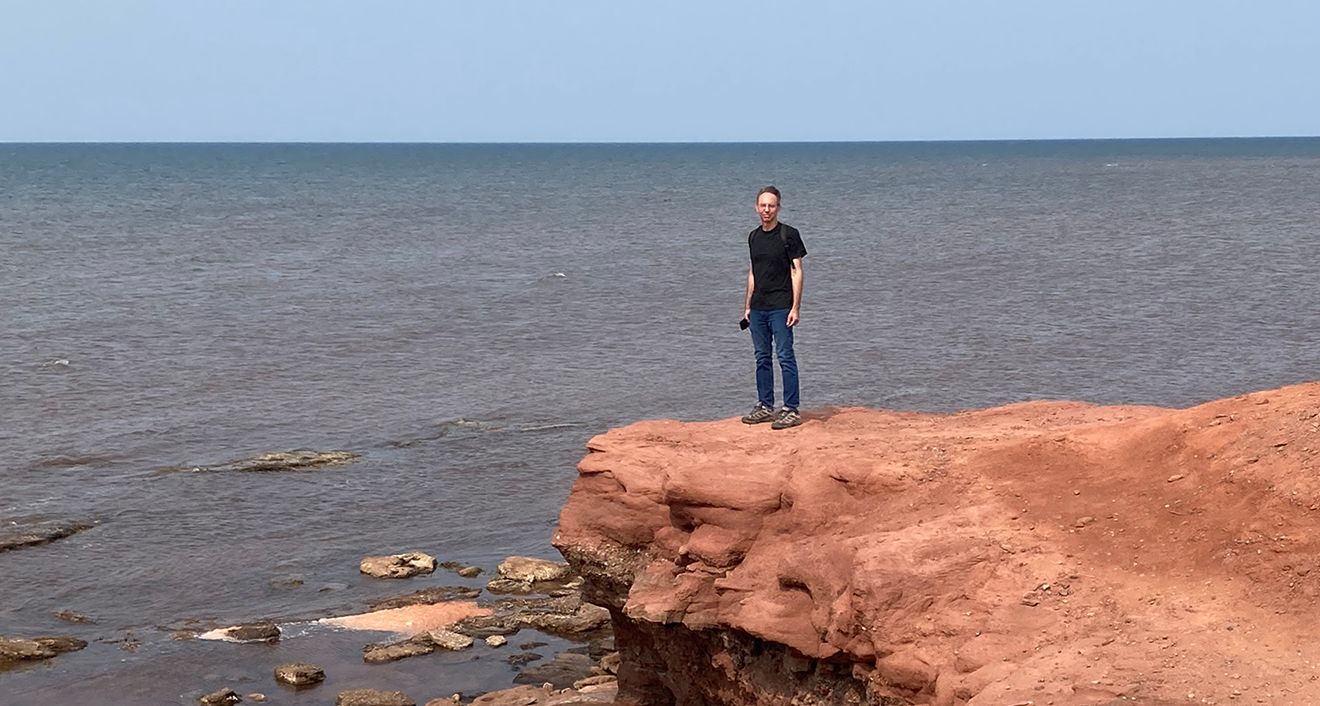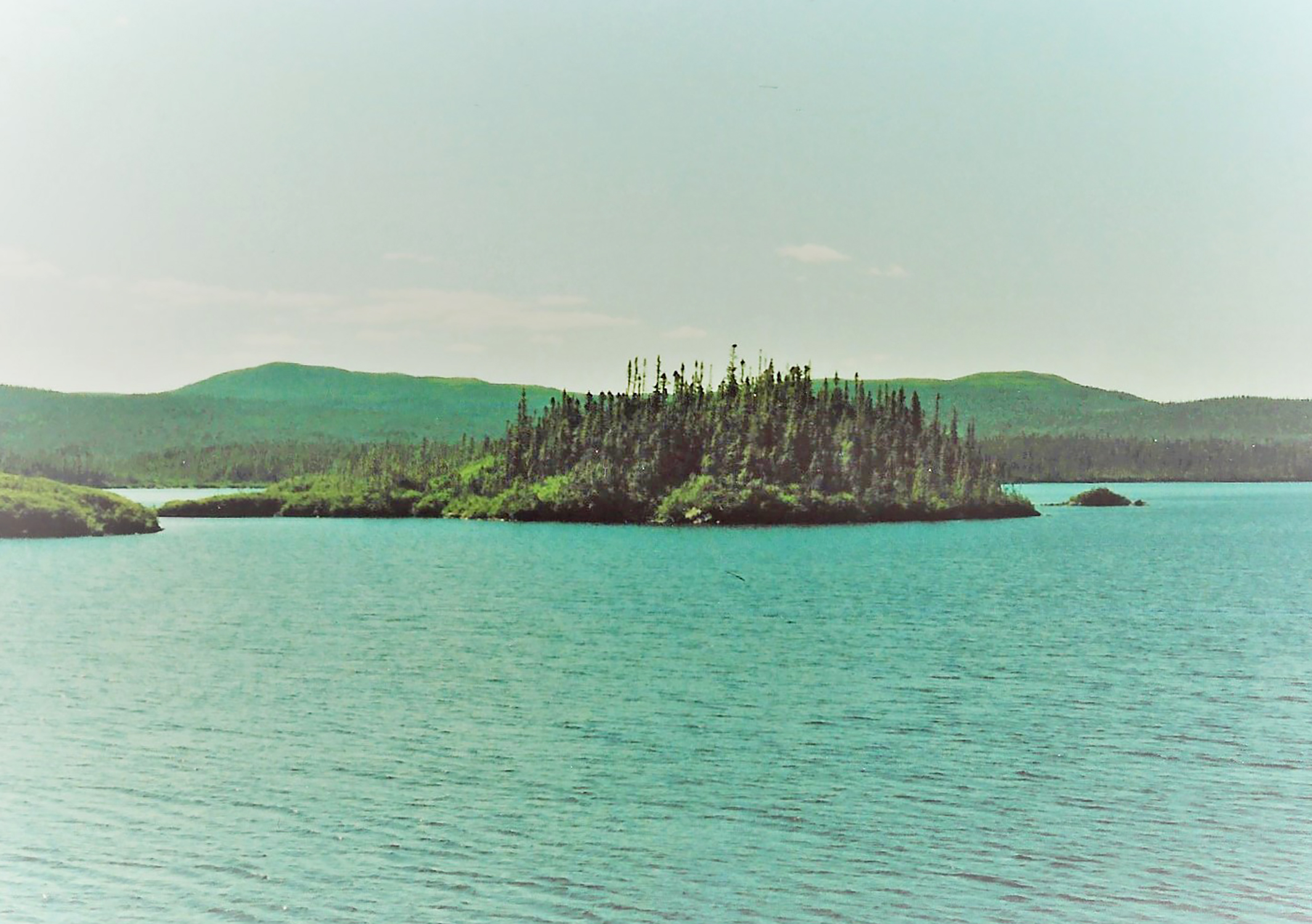
Island Time

You could say Josh Calder ’87 has a thing for islands: As of this writing, he’s been to 639 of them, cataloged in documents, photos, spreadsheets, and maps. Islands have enchanted Calder—a Washington, D.C.–based futurist who researches security and socioeconomic issues for corporate and government clients with his firm Foresight Alliance—since he was a child reading about the Lone Islands in C.S. Lewis’s Chronicles of Narnia books. As a government major at Wesleyan, he got a job organizing topographic maps tucked away in the Science Library (SciLi). It supercharged his nascent geo-obsession, spurring him to get an inflatable boat and paddle out to islands around central Connecticut. He quickly acquired a particular fondness for recursive islands—the islands-on-lakes-on-islands that appeared on the maps as bullseyes.
With the dog days of summer upon us and the world off the coast beckoning, Calder traces his outsized affinity for islands from his SciLi days through a solo quest to reach his first bullseye in the moose-laden wilds of Newfoundland, shares how futurism lends a sense of scale to these inherently fragile landscapes, and explains the deliberations that come with making his family a party to his island compulsions.
Calder's island-hopping has propelled him across the globe, including to Quail Island—also known as Ōtamahua—off of New Zealand.
Josh Calder ’87: There used to be a map collection at Wesleyan housed on the lower floor of SciLi, and I volunteered to do some of my work-study hours down there sorting things out. I was looking at a US Geological Survey topographic map of Neenah, Wisconsin, and there's a large island there called Doty Island, which has multiple bridges to it. I said to myself, “Gosh, you could go to that island without even noticing it. I wonder how many islands I've been to.” That made me make a list—I had been to 28 islands. And when a person of a certain mindset makes a list, it just sets it off: Well, I should add to that list.
I'm attracted to islands because they give a sense of comprehensibility, of limits within which you can explore something. I've been on islands of a couple of hundred square feet, and I realized, this island has geology, it has an ecosystem, it has multiple kinds of insects living here, building their hills. This is a place, and you could spend a long time exploring it.
I was looking at old maps of Newfoundland in SciLi, and I noticed a large island there called Glover Island, a lake island that is bigger than Nantucket. I noticed that Glover Island has multiple lakes on it, and I could see, even on this map, that the lakes had islands. I thought, “That’s a triple-nested island: an island on an island on an island.”
A year after graduating Wesleyan, I got it in my mind that I am going there. I rented camping supplies, put everything in my pack, got on a bus to Canada, got on a train, got on a ferry, got on another bus, then I hitchhiked, and I found myself at the inner lake, Grand Lake, which is basically an inland fjord in Newfoundland. I rowed out to Glover Island, deflated my boat, and I began hiking down the island on an old logging road. This island is 74 square miles, but I was the only one there. Before that I had never done anything other than, like, trailer-camping with my family. You could explore the psychology of what was going on with me at the time.
I was alone. I eventually discovered bears, foxes, and moose—I was woken up one morning by this clop clop getting louder and louder, then this sniffing sound—then hiked into the inner lake and spent days camped on the innermost island. I went to 15 triple-recursive islands in that lake. I've never discovered anyone ever who has slept on a triple-recursive island other than me; that was the apotheosis of my recursive island visiting.

After graduating from Wesleyan, Calder journeyed to Glover Island, a double-recursive island in Newfoundland that hosts the world's largest collection of triple-recursive islands—and captured his imagination inside SciLi.
I've been to 48 recursive islands in total, in places ranging from Iceland to New Zealand. The current estimate from my island database is that there are about 18,000 recursive islands in the world. Basically, everywhere that was glaciated has a lot of jumbled little islands; a few places, particularly Baffin Island, have really large numbers of islands on islands. Ireland and Great Britain have quite a few. Newfoundland has a lot.
I do the same thing with every island, whether it's 1,000 square feet or Great Britain. I note my arrival time. I take notes on what I see there, whatever is salient; for some islands that might be that it has one sycamore tree, or it might be characterizing the entire scenery and landscape of Prince Edward Island. I usually get a smartphone map screenshot of the blue dot on the island as additional proof I was there. Sometimes I try to go to the highest point of an island. Sometimes it’s a 10-foot mound. I've climbed to the tallest point on Hispaniola, which took three days of hiking with a mule to get to 10,417 feet. It was raining, I had my hood on and couldn’t see, and I hit my head on a ceremonial cross at the peak.
Calder at the highest point on Hispaniola, under the cross where he hit his head.
I've had the experience of hiring a dugout canoe and landing on what I thought was an island in Guatemala, going to a house and ringing the hanging bell out front, then discovering that I wasn't on an island because the lakeshore had changed and this was now mainland. I pretty much felt my ability to interact with the place disappear as I realized it wasn't an island. I was just bothering a random mainlander.
I once wanted to climb the tallest lake island in the world, which is Isla Ometepe in Nicaragua. I discovered our guide was leading us up this old landslide shoot—but it wasn't old, it was fresh. There were six-foot-high boulders with loose soil on top of them that we'd have to climb over. I realized, this isn't at all safe. We got to the top, and it’s a semi-active volcano, so you could feel heat radiating out from the fog at the top. Then I got married and had kids and had to stop doing this stuff. I am fine with much more low-key adventures.
An island is a piece of land—which is to say, soil—smaller than Australia that is surrounded by water. One test I have is the canoe test: Can you row a canoe around it? It's not infallible—that would not work on Goat Island on the lip of Niagara Falls, but I am still willing to count it. I'm fine with artificial islands as long as they are soil surrounded by water. It can't just be a piece of concrete in a concrete pool. That's not enough.
There are islands in every state, there are islands in Tibet, there are islands in the Sahara. Only a couple of places do not have any islands; the closest Vatican City has is a statue in a fountain. But wherever you are, there's some island nearby. And if your mind is open to it, it's got something interesting on it.
I am not at all a snob about islands—every one of them has its place. There's this island we went to in Pennsylvania called Neville Island. It's an industrial suburb of Pittsburgh, and it has multiple Superfund sites. But I like Neville Island. It is a place with character, it's inhabited, and it has a culture.
I travel mostly with my wife, and eventually, I started subjecting my kids to this. I recorded a moment when my kids each said, “I don't want to go to another island.” As the day gets long and I know we're passing by a readily visible bridged island, I’ll think, I’m just going to shut up about this one. You can only push things so far.
I only know of one other person who's been to more than me. Philip Conkling is the head of the Island Institute in Maine; he’s gone to something like 1,100 islands in Maine. The odd thing is I have not been to most of the basic islands in the world. I still have not set foot in Hawaii of all places.
Quite a few of the islands I've been to, particularly low-lying barrier islands, are in danger of disappearing. That's one reason I take so many photos and I get the latitude and longitude and images of any maps that exist of the island. I figure many of them are going away eventually.
One effect of being a futurist is an awareness of how long things last and how long things have lasted. Islands give you a broad sense of the temporariness of the landscape. Barrier islands are inherently ephemeral: they've only been around for a few thousand years. Almost all islands on the planet are younger than 10 million years, which, of course, is nothing in the history of the Earth. The oldest islands in the world are only about 100 million years old; we mammals are older than the oldest island.
At the same time, it does kind of get me in the heart when things that should last don’t. It’s like when a museum burns or gets looted in a war: Those things were supposed to outlast us. The idea that all these islands are going to last shorter than they should have—shorter than human memory—does trouble me. Even if almost all islands are just temporary in the grand scheme of things, they shouldn't be this temporary.
I still have the note cards I made as I worked in the map room of readily accessible islands in each state that I saw on those topographic maps, and I am still going to the islands I discovered in my original SciLi map viewing. We just went to Georgia to look at a school for my son, and we made a little detour to Lake Lanier Island, which I've known about since SciLi. More than 35 years go by and I'm still working on the original list.
There are at least a million islands in the world. It’s not a hobby for completists, like the people who go to every major league baseball park or all 50 states. But it gets me out of the house.









